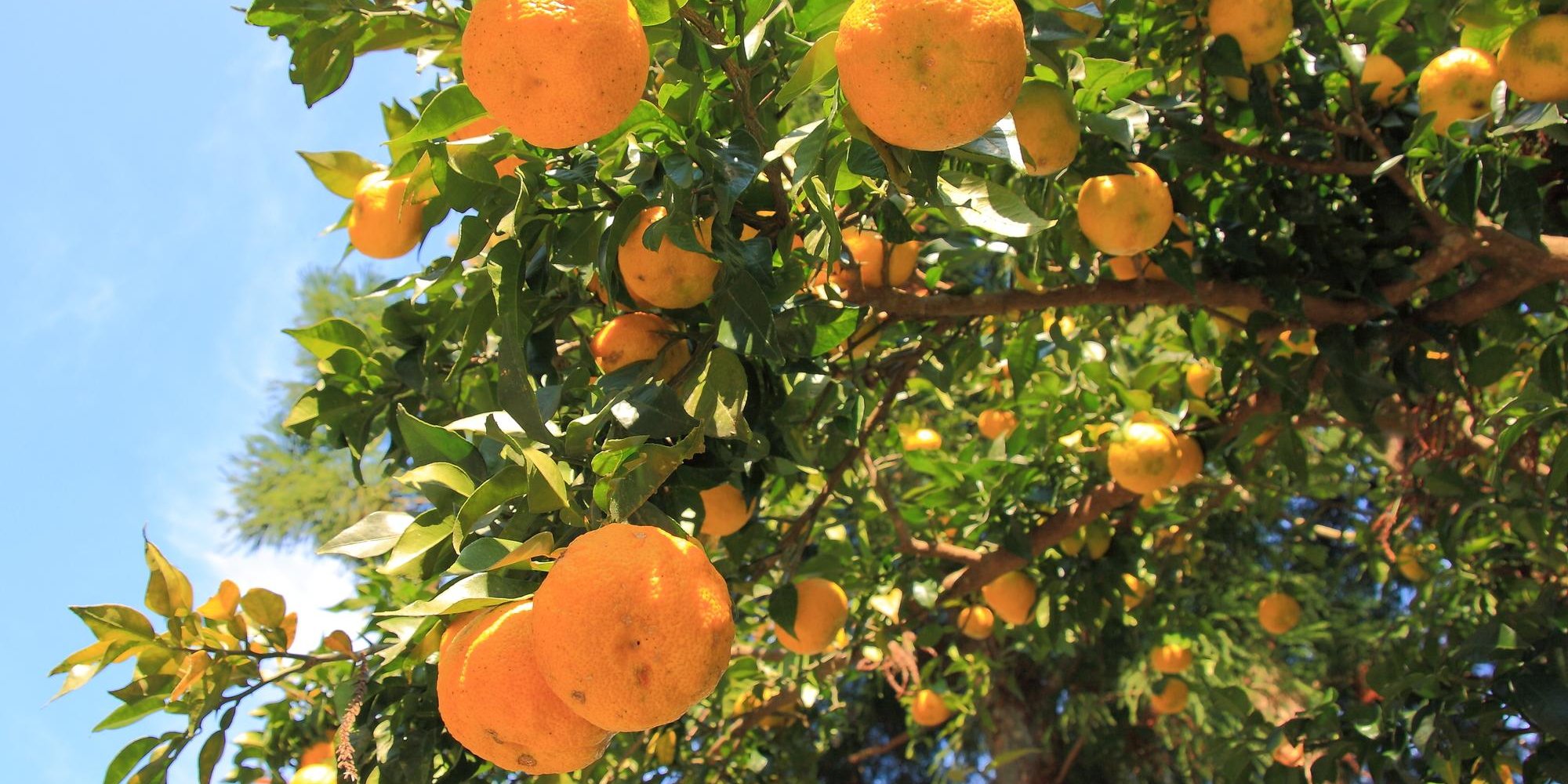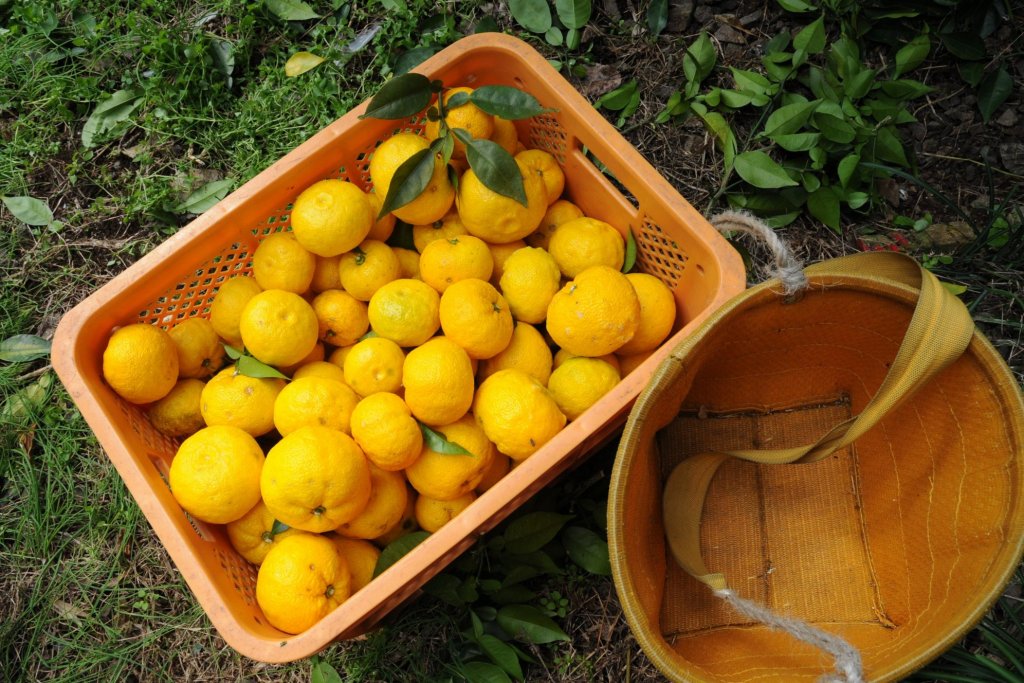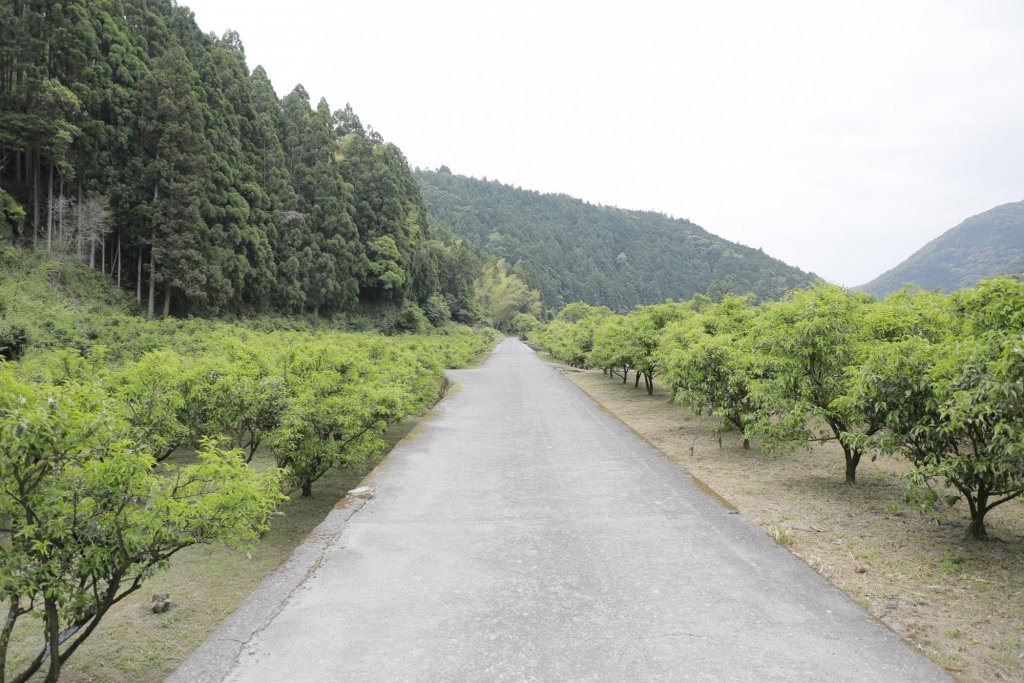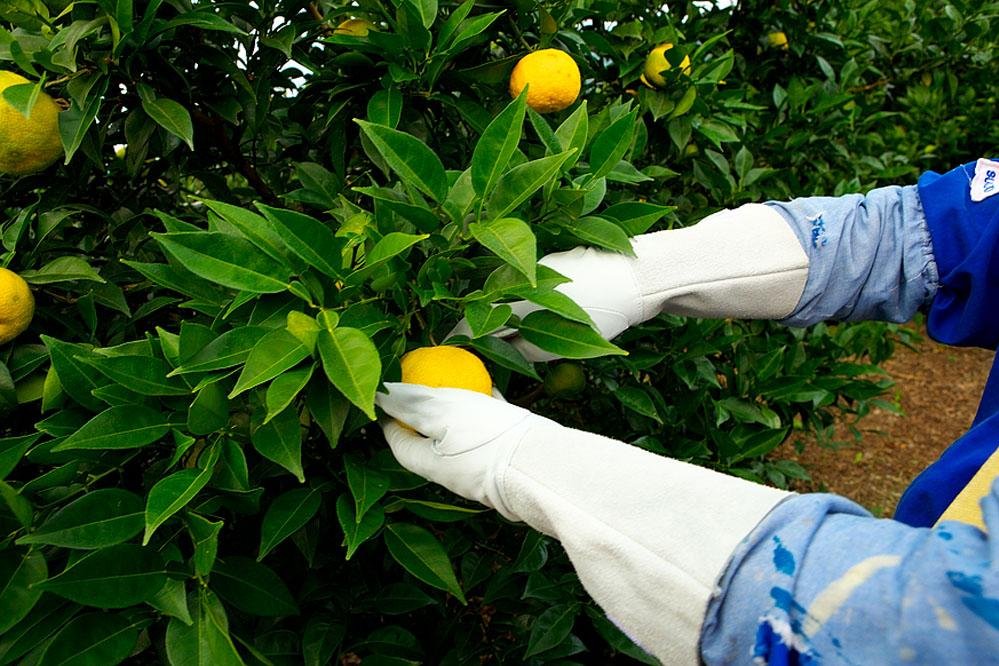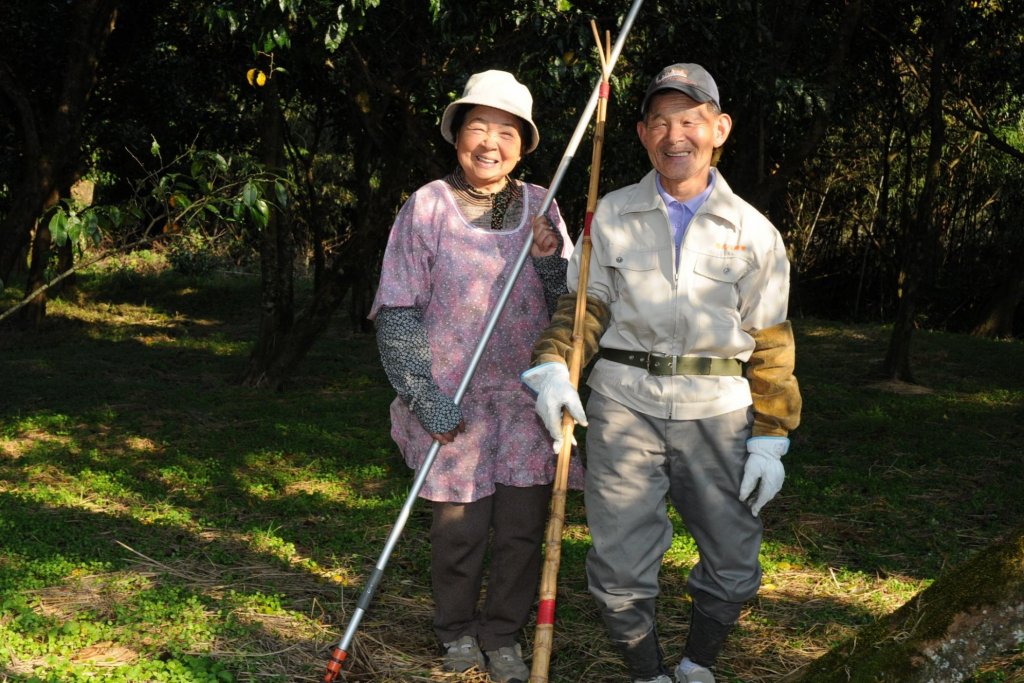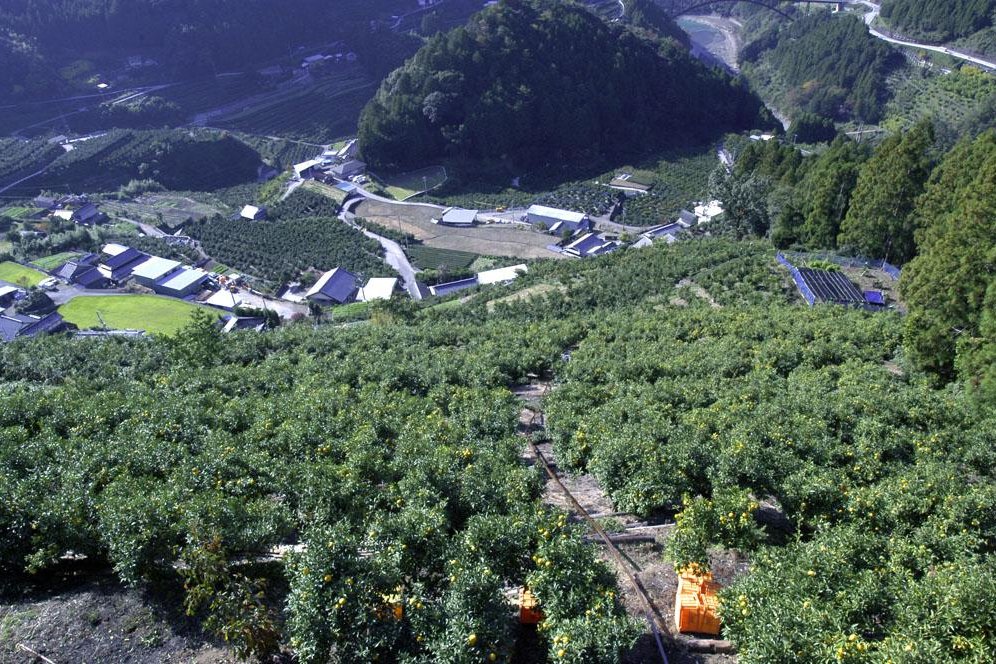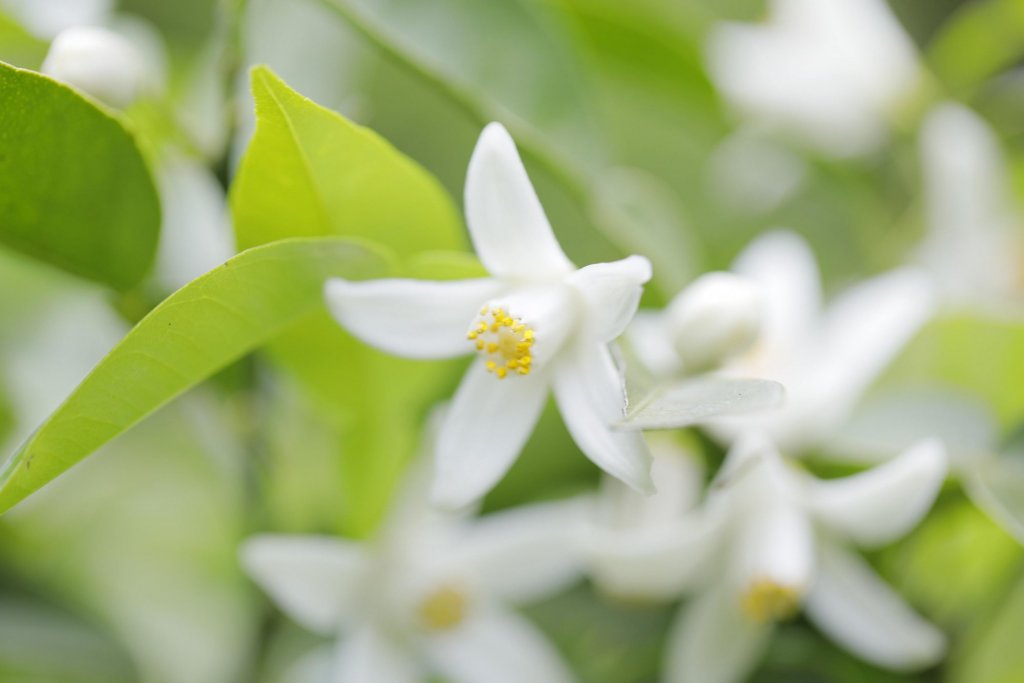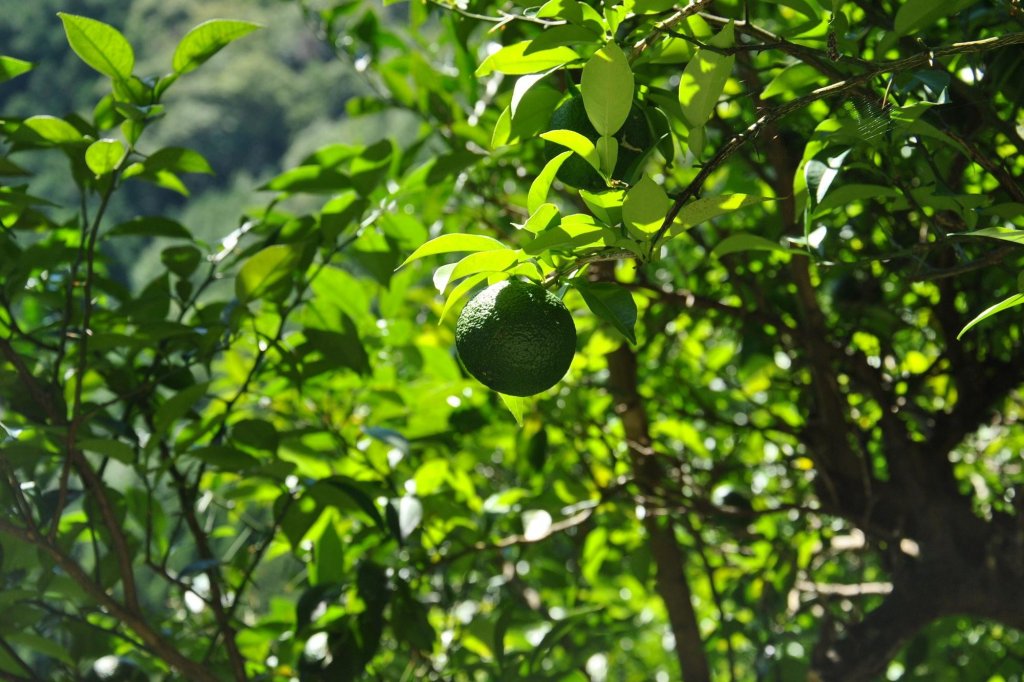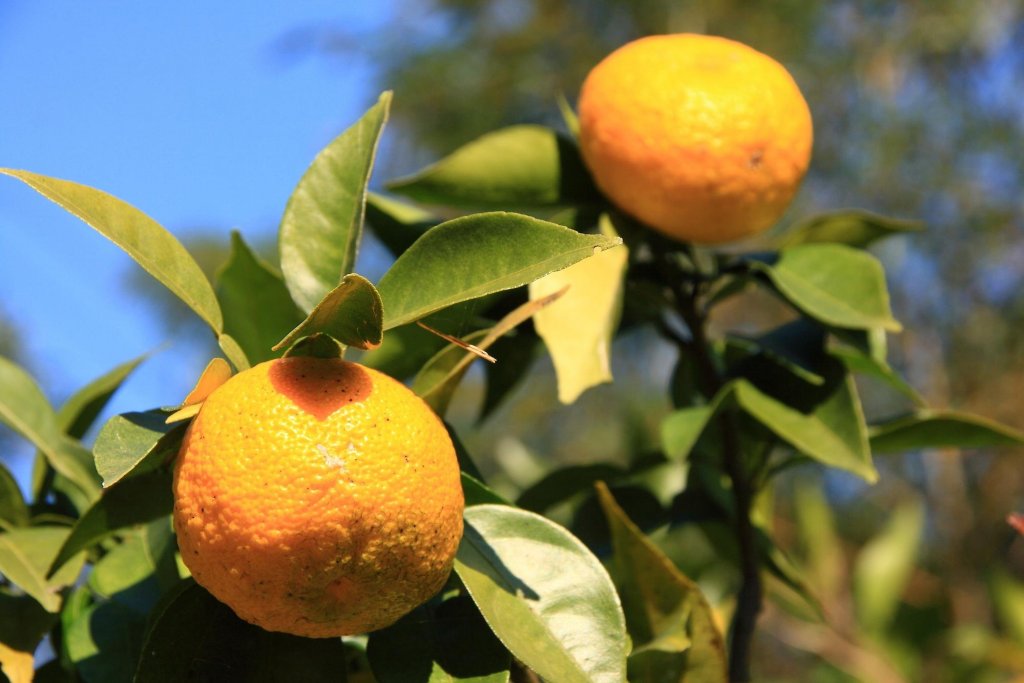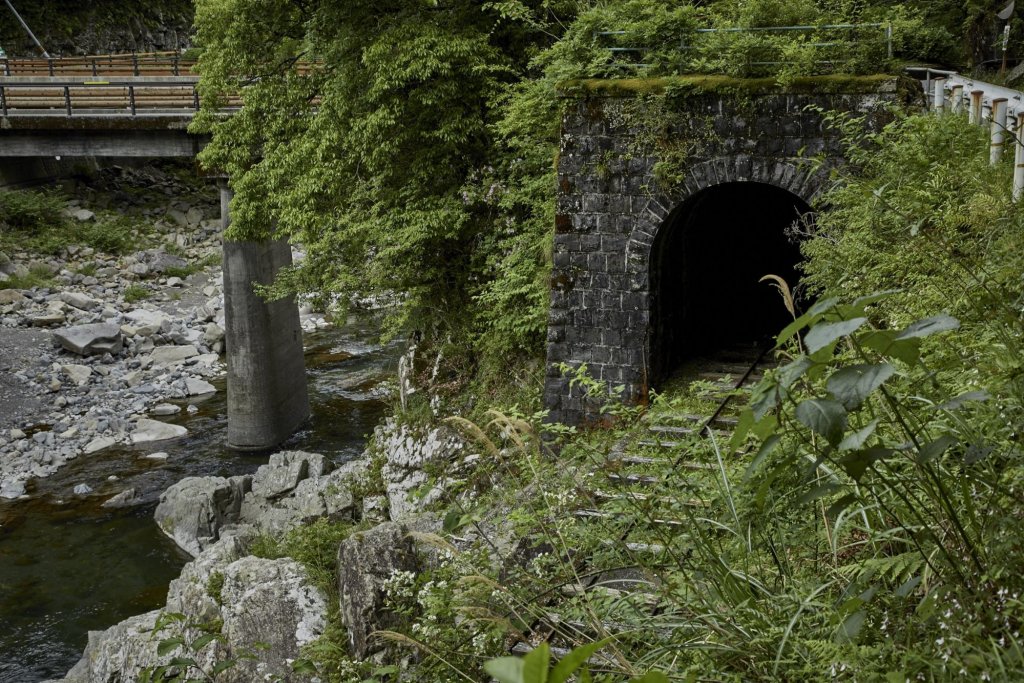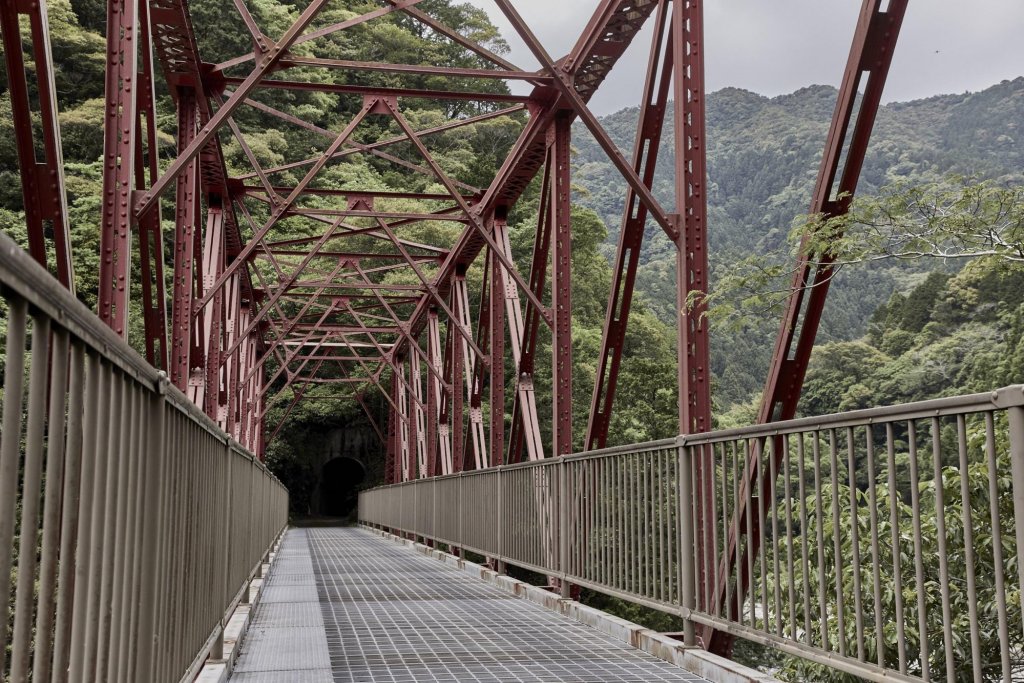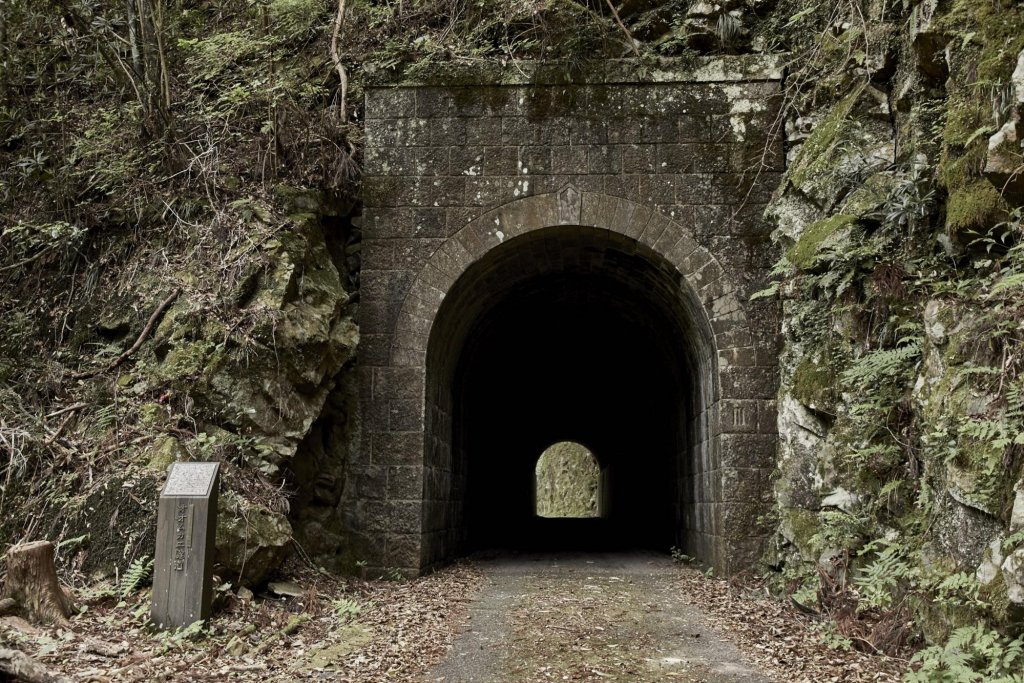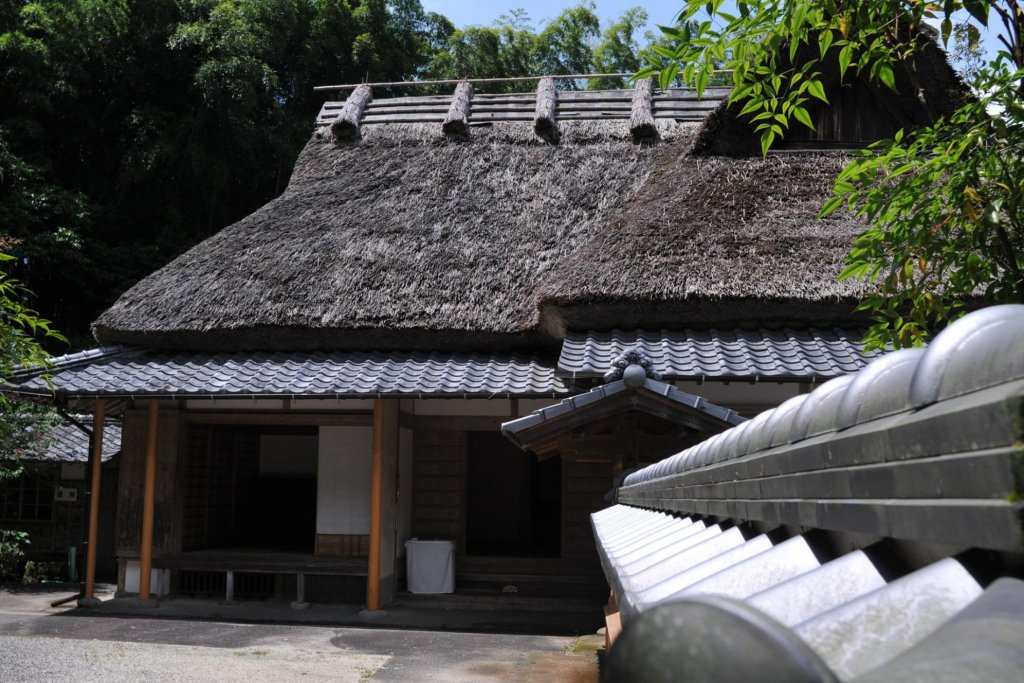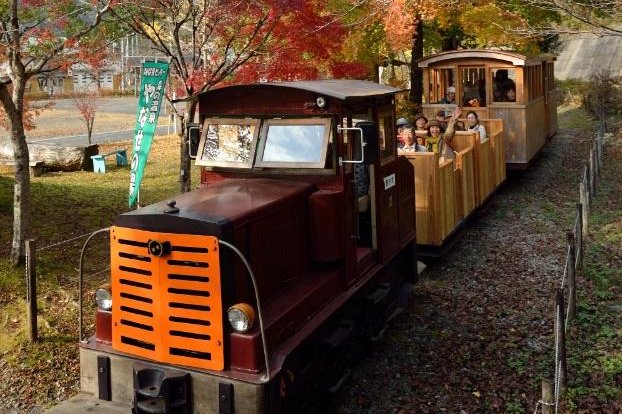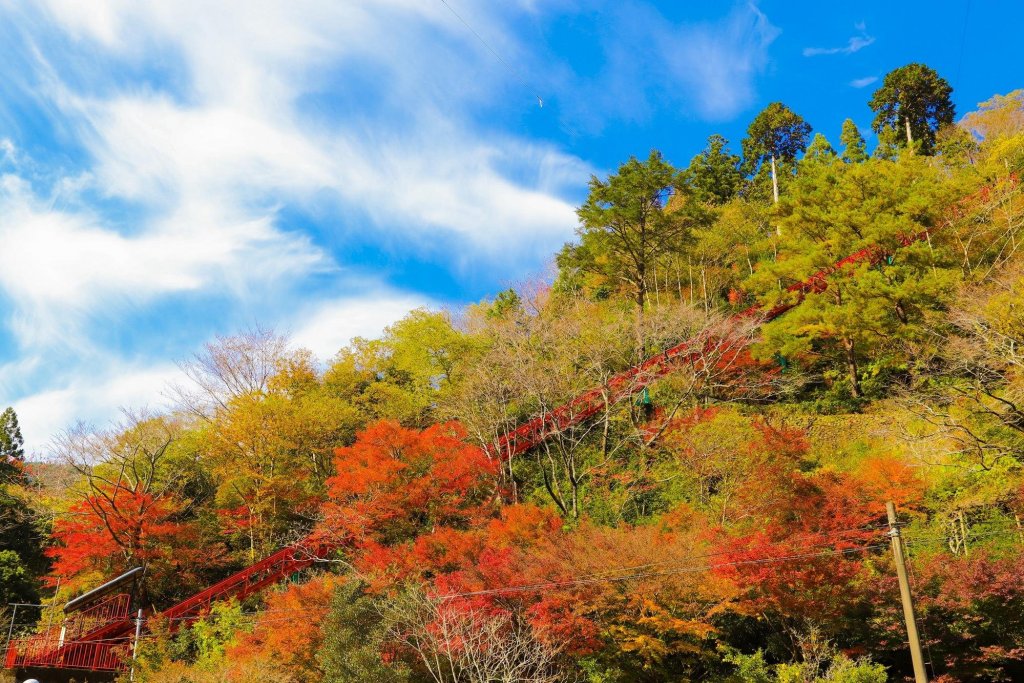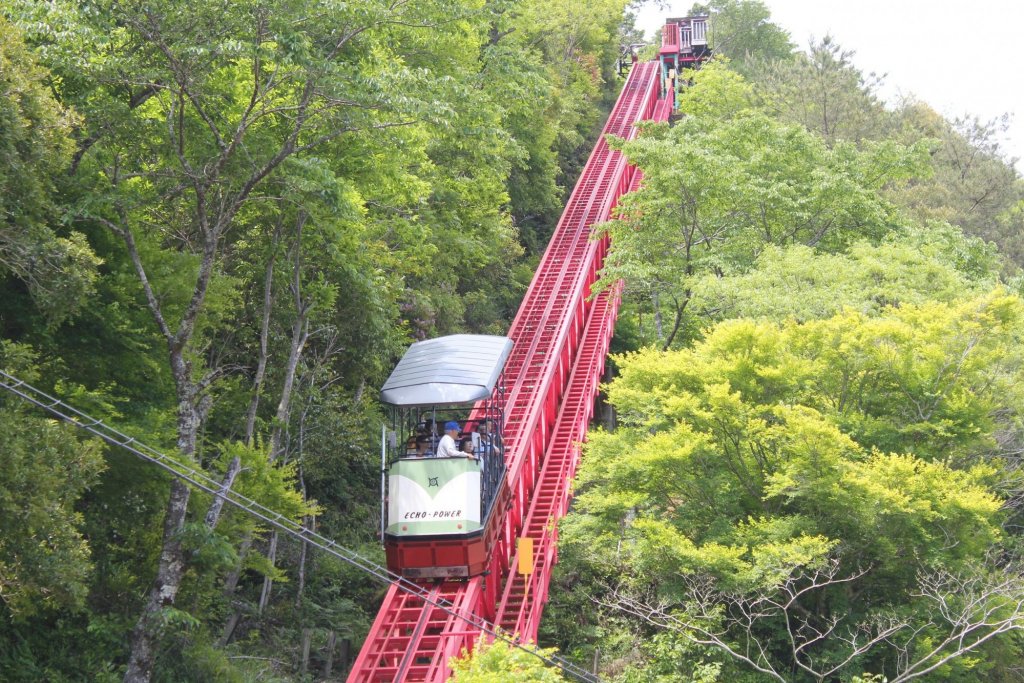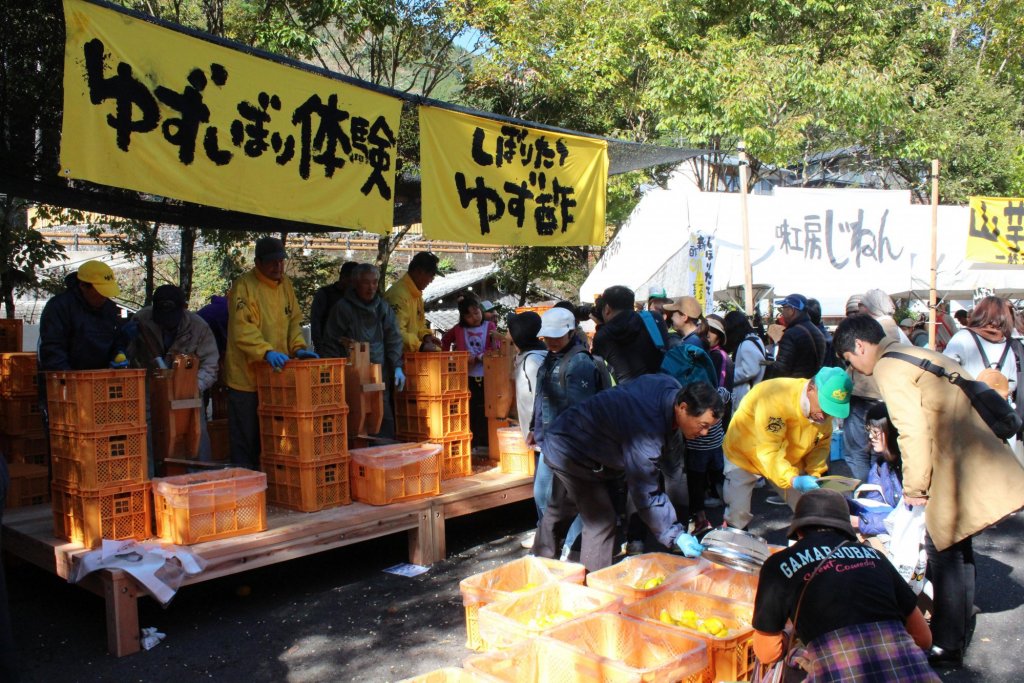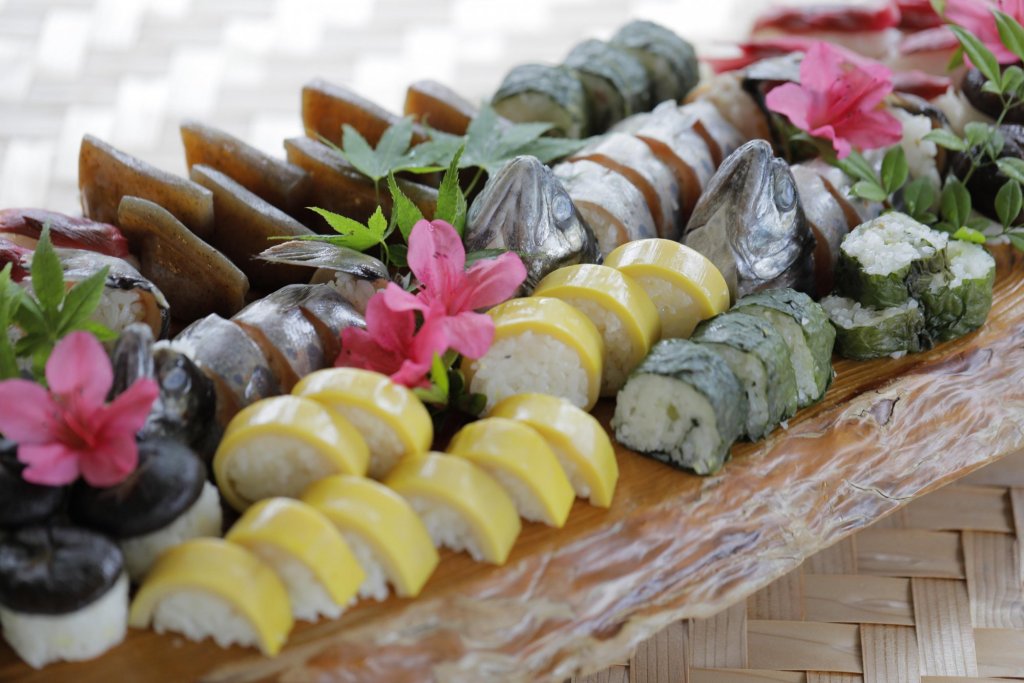History and Flavors on the Citrus-Scented Yuzu Road
The island of Shikoku is a major producer of citrus fruits like yuzu , mandarins, and sudachi . Kochi boasts the biggest production of yuzu not only Shikoku, but all of Japan. As this versatile citrus has gained fans across the globe, in recent years Kochi producers have even started exporting their yuzu to Europe. Take to the Yuzu Road to see the groves, learn about the roots of this thriving trade, and taste the unmistakable flavor of this local citrus.
From Logging Railroad to Yuzu Road
The townships of Nahari, Tano, Yasuda, Kitagawa and Umaji, located in the Chugei area in eastern Kochi, were once the epicenter of Kochi's booming logging industry. An extensive logging railroad linked these towns and transported timber that would be shipped across the country. However, in the 1960s the logging industry fell into decline. To replace the dying industry, locals began to pour their efforts into the cultivation of yuzu , which despite being a citrus fruit is well suited to growing in mountainous areas. Bare, logged mountain sides were replaced with the dark green of tiered yuzu orchards, and what was once Japan’s greatest logging railway was reborn as the Yuzu Road. Now the region is the biggest yuzu producer in the country and has even begun shipping the fragrant yellow fruit around the world!
With an abundance of this citrus fruit available, products made from yuzu began to hit the shelves and people all over Japan were able to enjoy Kochi yuzu . Thanks to the efforts of those who turned from logging to the cultivation of citrus, this region, with its picture-perfect views of tiered groves and history, has been recognized as a Japan Heritage site by the Agency for Cultural Affairs.
With an abundance of this citrus fruit available, products made from yuzu began to hit the shelves and people all over Japan were able to enjoy Kochi yuzu . Thanks to the efforts of those who turned from logging to the cultivation of citrus, this region, with its picture-perfect views of tiered groves and history, has been recognized as a Japan Heritage site by the Agency for Cultural Affairs.
Visit Retro Yuzu Villages
Umaji and Kitagawa, known as the “villages of yuzu ”, are blessed with virgin Japanese cedar forests and countless yuzu trees, some of which are over 300 year old. The lives of the residents have their roots in logging and the cultivation of citrus. Both villages have ryokan (traditional inns) and hot springs, so you can stay overnight and relax after exploring the area.
The appearance of the groves changes with each season, offering something a little different each time you visit. In early summer the yuzu trees are blanketed in small white flowers, and by mid-summer they are covered with shiny green leaves and small green fruit. Once autumn arrives, the fruit begins to ripen and turn the sunny yellow color that indicates they are ready to be picked, and the air is filled with the unmistakable scent of the citrus. Throughout the fall and early winter, villages in the Chugei region are abuzz with activity, as farmers busily bring in the harvest and drive small trucks filled with crates of yuzu to sell.
This region is also one of Japan's top 3 cedar forest locations. Japanese cedar forests, standing in an almost orderly fashion, contrast with the 213 hectares of cultivated yuzu orchards, and have a wild feeling that makes you excited to go exploring.
The appearance of the groves changes with each season, offering something a little different each time you visit. In early summer the yuzu trees are blanketed in small white flowers, and by mid-summer they are covered with shiny green leaves and small green fruit. Once autumn arrives, the fruit begins to ripen and turn the sunny yellow color that indicates they are ready to be picked, and the air is filled with the unmistakable scent of the citrus. Throughout the fall and early winter, villages in the Chugei region are abuzz with activity, as farmers busily bring in the harvest and drive small trucks filled with crates of yuzu to sell.
This region is also one of Japan's top 3 cedar forest locations. Japanese cedar forests, standing in an almost orderly fashion, contrast with the 213 hectares of cultivated yuzu orchards, and have a wild feeling that makes you excited to go exploring.
Exploring the Yanase Forestry Railway Remains
When journeying along the Yuzu Road, be sure to stop at the Yanase Forestry Railway. Construction of the railway started around 110 years ago, and besides being essential for transporting lumber, it was also an important link and lifeline for the villages around the Chugei area. While the railway was shut down in 1964, several sections of the remains have been designated Important Cultural Properties and are well-preserved.
You can still find the stone-built Bandajima and Omukae tunnels and the Myojinguchi truss bridge in the town of Yasuda. In Umaji the stone-built Gomi Tunnel still stands, as does the steel Kojima Bridge in Kitagawa. The sights on the Yuzu Road are part of a Japan Heritage site, and are carefully maintained as important parts of the area’s history. Located alongside rivers and in the mountains, the structural remains of the old railroad almost seem to be at one with their natural surroundings.
By exploring the old logging railway line, you can get a glimpse into the history of the once booming logging industry and gain some insight into the grit and resilience of those who worked among the towering trees. In Kitagawa Village, you will find the house of samurai Shintaro Nakaoka, one of the earliest supporters of yuzu cultivation, along with a museum and statue dedicated to the citrus-loving samurai.
You can still find the stone-built Bandajima and Omukae tunnels and the Myojinguchi truss bridge in the town of Yasuda. In Umaji the stone-built Gomi Tunnel still stands, as does the steel Kojima Bridge in Kitagawa. The sights on the Yuzu Road are part of a Japan Heritage site, and are carefully maintained as important parts of the area’s history. Located alongside rivers and in the mountains, the structural remains of the old railroad almost seem to be at one with their natural surroundings.
By exploring the old logging railway line, you can get a glimpse into the history of the once booming logging industry and gain some insight into the grit and resilience of those who worked among the towering trees. In Kitagawa Village, you will find the house of samurai Shintaro Nakaoka, one of the earliest supporters of yuzu cultivation, along with a museum and statue dedicated to the citrus-loving samurai.
List of facilities of the old Yanase Logging Railroad (National designated Important Cultural Treasure)
Yuzu Road Map
Yuzu Road Map
Fun Activities Along Yuzu Road
At the Yanase Forestry Railway in Umaji Village visitors can ride a train that was once used to haul felled cedar trees. There is also a 50m long incline rail in the center of the village that you can ride up to a platform, to take in the views of the groves, mountains and houses below.
In autumn, don’t miss the Yuzu Hajimaru Festival, held to celebrate the start of the yuzu harvest. Various events are held during this time, with plenty of stalls selling foods and drinks flavored with the citrus.
●Yanase Forestry Railway (Yanase Shinrin Tetsudo) - Train ride/Train driving experience
Address: Inside Maruyama Park (Yanase Maruyama, Umaji Village, Aki-Gun)
TEL: 0887-43-2240 (Mori-no-Onsen Yanase-no-Yu)
Hours: 10:00am~3:30pm (closed between 12:00pm~1:00pm)
Operating days: Sundays & public holidays
Cost:
Train ride: ¥400 (3 yrs to elementary school age: ¥200)
Train driving experience: ¥1,000 (elementary school age children and up)
●Shinrin Tetsudo (Forestry Railway) Incline Railway
Address: 3564-1 Umaji, Umaji Village, Aki-Gun
TEL: 0887-44-2026 (Umaji Onsen)
Hours: 8:30am to 4:30pm
Operating days: Sundays, public holidays, and every day in August
Cost: Train ride: ¥400 (¥300 for children 3yrs to elementary school age)
●Yuzu Hajimaru Festival - Early November
Where: Umaji-mura Nokyo - Yuzu-no-Mori/ around the village
Address: 3888-4 Umaji, Umaji Village, Aki-Gun
TEL: 0120-559-659(Umaji-mura Nogyo Kyodo Kumiai - Umaji Village Farmers' Association)
In autumn, don’t miss the Yuzu Hajimaru Festival, held to celebrate the start of the yuzu harvest. Various events are held during this time, with plenty of stalls selling foods and drinks flavored with the citrus.
●Yanase Forestry Railway (Yanase Shinrin Tetsudo) - Train ride/Train driving experience
Address: Inside Maruyama Park (Yanase Maruyama, Umaji Village, Aki-Gun)
TEL: 0887-43-2240 (Mori-no-Onsen Yanase-no-Yu)
Hours: 10:00am~3:30pm (closed between 12:00pm~1:00pm)
Operating days: Sundays & public holidays
Cost:
Train ride: ¥400 (3 yrs to elementary school age: ¥200)
Train driving experience: ¥1,000 (elementary school age children and up)
●Shinrin Tetsudo (Forestry Railway) Incline Railway
Address: 3564-1 Umaji, Umaji Village, Aki-Gun
TEL: 0887-44-2026 (Umaji Onsen)
Hours: 8:30am to 4:30pm
Operating days: Sundays, public holidays, and every day in August
Cost: Train ride: ¥400 (¥300 for children 3yrs to elementary school age)
●Yuzu Hajimaru Festival - Early November
Where: Umaji-mura Nokyo - Yuzu-no-Mori/ around the village
Address: 3888-4 Umaji, Umaji Village, Aki-Gun
TEL: 0120-559-659(Umaji-mura Nogyo Kyodo Kumiai - Umaji Village Farmers' Association)
Try Yuzu-Flavored Foods
After exploring the Yuzu Road, it will be clear why this small yellow citrus fruit has had such a big impact on local cuisine. One must-try is a Kochi version of sushi called inaka-sushi . Instead of vinegar, the rice is mixed with yuzu juice, giving it a pleasing, refreshing kick. And instead of using fish, this countryside-style sushi is topped with preserved vegetables and savory fried tofu.
While in Umaji and Kitagawa, look for cans and bottles of locally-produced yuzu drinks, marmalade and candy. Another popular gift is yuzukosho , a condiment made from green chilies, yuzu zest and salt, that adds a punch to any dish you can think of!
While in Umaji and Kitagawa, look for cans and bottles of locally-produced yuzu drinks, marmalade and candy. Another popular gift is yuzukosho , a condiment made from green chilies, yuzu zest and salt, that adds a punch to any dish you can think of!
